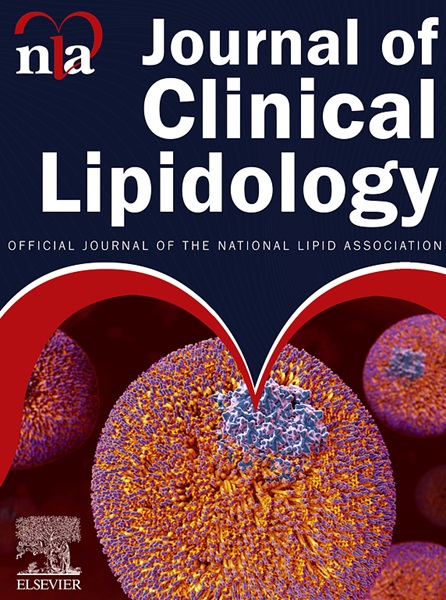严重高甘油三酯血症患者的杂合致病性PPARG变异。
IF 4.6
3区 医学
Q2 PHARMACOLOGY & PHARMACY
引用次数: 0
摘要
背景:PPARG的杂合致病性变异导致家族性3型部分脂肪营养不良(FPLD3,孟德尔遗传在人类[MIM] #604367),一种遗传性胰岛素抵抗形式,伴有多种代谢紊乱,包括高甘油三酯血症。我们调查了多因素乳糜微粒血症综合征(MCS)患者队列中FPLD3个体的患病率。方法:对182例临床诊断为MCS的患者进行PPARG基因筛选。结果:我们发现3.3%的MCS患者(6/182)具有杂合致病性PPARG变异,与FPLD3的诊断一致。这些变异分别是PPARG p.Lys186fs (ClinVar标识符8132)、p.Glu217Lys、p.Pro454fs (ClinVar标识符436405)、p.Met284Ile、p.Ser383Arg和p.Arg181Trp。这些患者之前都没有被诊断为FPLD3,他们的临床和生化特征与整个MCS队列的患者相当。结论:MCS患者中有少量但临床相关的亚组有FPLD3。FPLD3的临床特征是微妙的,但表型可能代谢严重。重度高甘油三酯血症患者的遗传筛查应包括脂肪营养不良基因的评估,因为脂肪营养不良患者的管理不同于典型的MCS患者。本文章由计算机程序翻译,如有差异,请以英文原文为准。
Heterozygous pathogenic PPARG variants in patients with severe hypertriglyceridemia
BACKGROUND
Heterozygous pathogenic variants in PPARG cause familial partial lipodystrophy type 3 (FPLD3; Mendelian Inheritance in Man [MIM] #604367), a heritable form of insulin resistance with multiple metabolic disturbances including hypertriglyceridemia. We investigated the prevalence of FPLD3 individuals in our cohort of patients with multifactorial chylomicronemia syndrome (MCS).
METHODS
We used our targeted DNA sequencing panel to screen the PPARG gene in 182 clinically diagnosed MCS patients.
RESULTS
We found that 3.3% of MCS patients (6/182) had a heterozygous pathogenic PPARG variant, consistent with a diagnosis of FPLD3. The variants were PPARG p.Lys186fs (ClinVar identifier 8132), p.Glu217Lys, p.Pro454fs (ClinVar identifier 436405), p.Met284Ile, p.Ser383Arg, and p.Arg181Trp. None of these patients had previously been diagnosed with FPLD3 and their clinical and biochemical features were otherwise comparable to those of the entire MCS cohort.
CONCLUSION
A small but clinically relevant subgroup of individuals with MCS has FPLD3. Clinical features in FPLD3 are subtle but the phenotype can be metabolically severe. Genetic screening of patients with severe hypertriglyceridemia should include assessment of lipodystrophy genes, since management of lipodystrophy patients is distinct from that of typical MCS patients.
求助全文
通过发布文献求助,成功后即可免费获取论文全文。
去求助
来源期刊
CiteScore
7.00
自引率
6.80%
发文量
209
审稿时长
49 days
期刊介绍:
Because the scope of clinical lipidology is broad, the topics addressed by the Journal are equally diverse. Typical articles explore lipidology as it is practiced in the treatment setting, recent developments in pharmacological research, reports of treatment and trials, case studies, the impact of lifestyle modification, and similar academic material of interest to the practitioner.
Sections of Journal of clinical lipidology will address pioneering studies and the clinicians who conduct them, case studies, ethical standards and conduct, professional guidance such as ATP and NCEP, editorial commentary, letters from readers, National Lipid Association (NLA) news and upcoming event information, as well as abstracts from the NLA annual scientific sessions and the scientific forums held by its chapters, when appropriate.

 求助内容:
求助内容: 应助结果提醒方式:
应助结果提醒方式:


